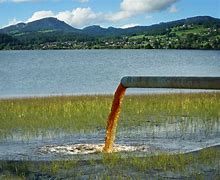|
Waterborne Diseases and How to Prevent Them By Pierre Mouchette | Bits-n-Pieces Waterborne diseases afflict hundreds of millions of people, primarily those living without safe, accessible water. Diarrhea is the main symptom of most common waterborne diseases. Additionally, research shows that diarrhea is the second leading cause of death for children under five. It causes more childhood deaths than malaria, AIDS, and measles combined. Yes, that is hundreds of thousands of deaths.
What Are Waterborne Diseases? Waterborne diseases are illnesses caused by microscopic organisms, like viruses and bacteria, ingested through contaminated water or by coming into contact with feces. If every person could practice safe sanitation and hygiene and have access to clean water, these diseases would not exist. The most common waterborne diseases, their symptoms, and how to prevent them are as follows: Typhoid Fever Although rare in industrialized countries, Typhoid Fever is well-known in impoverished parts of developing nations. Typhoid Fever is spread by contaminated food, unsafe water, and poor sanitation. Yes, it is highly contagious. Symptoms include:
Cholera Cholera may be found in marginalized villages with widespread poverty and poor sanitation. The disease is spread through contaminated water and causes severe dehydration and diarrhea. Cholera can be fatal within days or even hours of exposure to the bacteria, but only 1 in 10 people will develop life-threatening symptoms. Symptoms include:
When handwashing is unavailable, cholera can impact an entire village. In developing countries, data shows that a significant percentage of households do not have the means to wash their hands properly. They do not have safe water, soap, and a washing facility, making hygiene management and disease prevention nearly impossible. Giardia This waterborne disease is common through contaminated water, found in ponds and streams, but you can also find it in a town’s water supply, swimming pools, and more. The infection is from a parasite and typically clears up after a few weeks. However, those exposed may experience intestinal problems for years to come. Symptoms include:
Dysentery An intestinal infection, dysentery is a waterborne disease characterized by severe diarrhea and blood or mucus in the stool. Dysentery is an excellent reason always to wash your hands, as the disease is spread mainly through poor hygiene. It can be caused by bacteria, viruses, or parasites in unsafe food and water and by people coming in contact with fecal matter. If someone experiencing dysentery cannot replace fluids quickly enough, their life could be at risk. Symptoms include:
Mild dysentery usually clears up with rest and fluids, but over-the-counter medications such as Pepto-Bismol can help with stomach cramping. More severe cases can be treated with antibiotics, although some strains of the disease are resistant. Escherichia Coli (E. coli) This bacteria has various strains; some are dangerous, and some can be beneficial. For example, E. coli bacteria are essential in creating a healthy intestinal tract. However, if animal waste has found its way into farmland where produce is grown or if strains of E. coli are spread by making ground beef, those who consume these foods could experience symptoms of the waterborne illness. The bacteria are also in unsafe water sources around the globe where human water sources and cattle coexist. Symptoms of dangerous strains of E. coli are similar to that of dysentery and other waterborne diseases. Most bouts of E. coli pass within a week, but older people and young children have a greater chance of developing life-threatening symptoms. Anyone believed to have been subjected to contaminated food or water should contact a doctor if diarrhea contains blood. Prevention and Treatment - as always, avoid water possibly contaminated by human and animal feces (like ponds, rivers, and swamps). If you are going to eat ground beef, cook thoroughly. Wash fruits and vegetables well, wash hands often and drink only safe water. Drink plenty of safe water, rest, and take over-the-counter diarrheal medication to treat the disease. Hepatitis A A liver infection is caused by consuming contaminated food and water or coming into close contact with someone who has the condition. People who travel to developing countries or work in rural communities with poor sanitation and hygiene management can be vulnerable to disease. Symptoms include:
Prevention and Treatment - the best way to prevent hepatitis A is by getting the vaccine. Eat only thoroughly cooked and served hot foods. Avoid eating anything at room temperature. Only eat fruit that you can peel and that you have peeled yourself. Do not eat from food vendors, and do not eat runny eggs or raw/rare meat. For a complete list of dos and don’ts, visit the CDC’s page on Hepatitis A here. Once a person has hepatitis A, they build immunity and will likely never get it again. However, the symptoms are severe, often forcing people to take time off work or school to recover. If you have contracted hepatitis A, rest, avoid drinking alcohol, and drink plenty of fluids. The disease will run its course and full recovery after three months. Salmonella Most cases of salmonella come from ingesting food or water contaminated with feces. Undercooked meat, egg products, fruits, and vegetables can also carry the disease. Most people do not develop complications, but children, pregnant women, older adults, and people with weakened immune systems are most at risk.
Comments are closed.
|
Archives
May 2024
|
